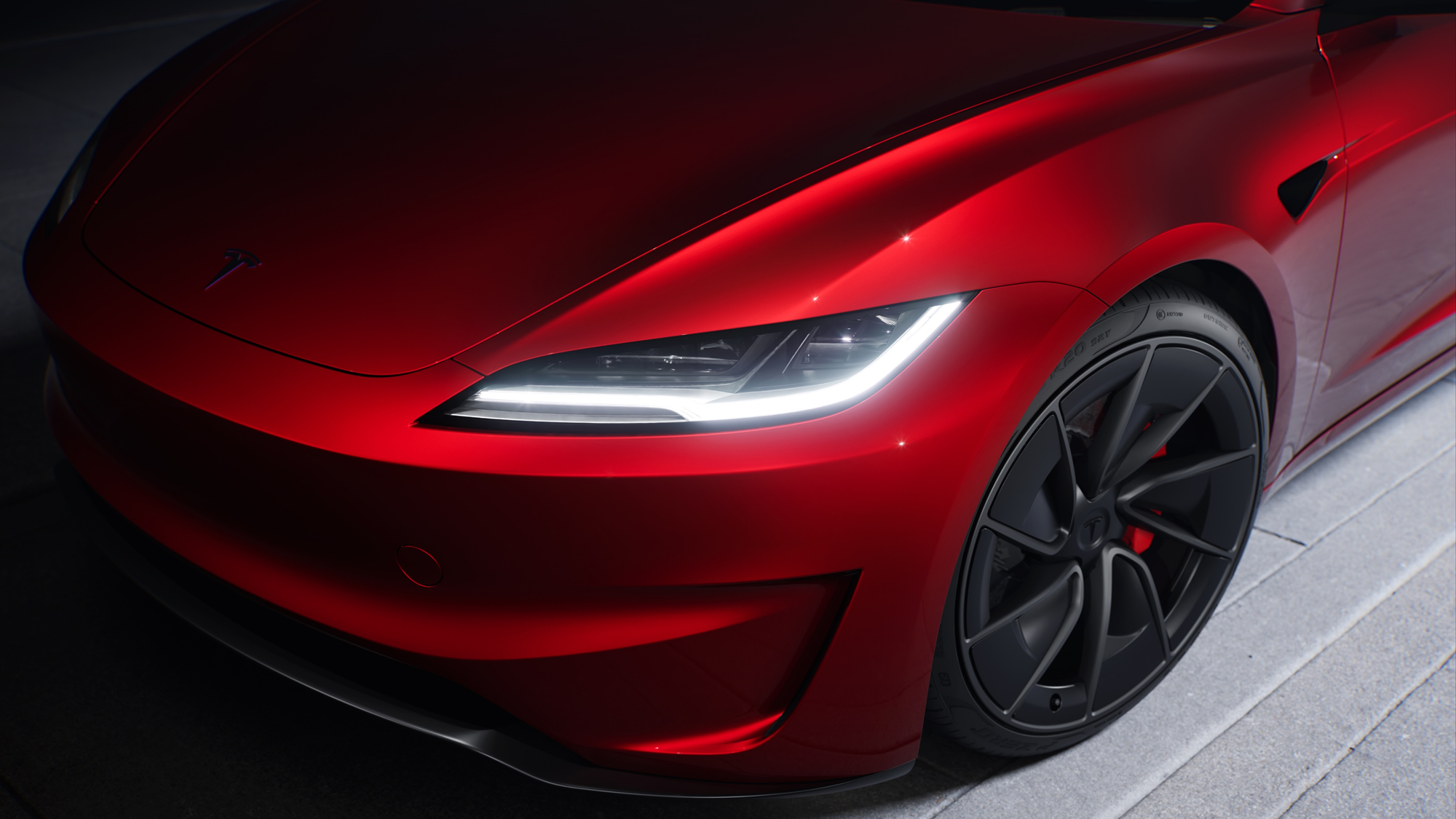Tesla Model Y vs Model 3: BEST Tesla EV to Buy RIGHT NOW?
***Updated January 20th, 2023***
If you are in the market to purchase either a Tesla Model 3 or a Tesla Model Y, and you are trying to determine which vehicle is better for your needs, then read on. In this article you will find detailed side by side comparisons to help you answer the question: Is the Model Y worth the extra cost premium over the Model 3?
COST DIFFERENCE
I think it's important that we first establish the cost difference between the two vehicles. In North America, the Tesla Model 3 is currently available in three different variants right now: Standard Range (rear wheel drive model), Long Range (all wheel drive model) and also the Performance (all wheel drive model). The Model Y is available in the Long Range (all wheel drive) or Performance (all wheel drive) variant.
If you compare the purchase price between a Long Range Model 3 and a Long Range Model Y and add in the delivery and order fees, you can see that the long range Model Y cost $3,000 more than the Long Range Model 3. However, for many people, the most important number might be that monthly payment amount which is only about $49 more for the Model Y with $5,000 down, financed for 72 months and at a 5.34% interest rate.
Now, if you're fine with just over 270 miles of EPA rated range (which is probably fine for most people), then you might compare the Standard Range RWD Model 3 to the cheapest version of the Model Y, and as you can see in the chart below, there is quite a price difference between these two vehicles. As you can see in the chart below, the Model Y will cost you somewhere around $146 more per month if you finance the vehicle with the terms that we have specified below.
IS THE MODEL Y WORTH THE EXTRA COST?
The Model 3 is a great vehicle and does offer some features and some benefits that the Model Y does not. For instance, when it comes to energy efficiency and the energy costs, the Standard Range RWD, and also the Long Range AWD Model 3 will cost slightly less per year and average energy costs due to the Model 3 having slightly better efficiency. However, as you can see in the chart below, electricity costs are quite low and both vehicles are very efficient. So, although the Model 3 is more efficient and does cost a bit less in energy cost, the difference is not that drastic.
MAINTENANCE & DEPRECIATION COSTS
Maintenance costs should be about the same for both vehicles because both the Tesla Model 3 and Model Y require very little maintenance and do not require oil changes. Transmission, fluid services, tune ups, belt replacements, etc. That being said, replacing the tires on the Model Y will generally cost a bit more over the Model 3 due to the larger wheel size. When it comes to selling your vehicle in a few years, depreciation should be very similar between these two vehicles. According to my recent calculations, I would expect around a 30% depreciation in either vehicle after 5 years and 70K miles based off of kbb.com data.
RANGE COMPARISON
Not only is the Model 3 a little bit more efficient, but it also offers more range more range than the Tesla Model Y. As you can see in the chart below, the Long Range AWD Model 3 offers up to 358 miles of EPA rated range as compared to the Model Y which offers up to 330 miles of EPA rated range.
EXTERIOR DIMENSIONS
As you can see in the chart below, the Model Y is a little bit longer, a little bit wider, over seven inches taller, has a slightly longer wheelbase and has just over an inch more ground clearance than the Model 3.
When it comes to some of the practical vehicle measurements, due to the Model Y being taller off the ground than the Model 3, when you're getting into the Model Y, the height from the road surface to the top of the door SEAL is about 58-1/2 inches, whereas with the Model 3, that same measurement is just over 51 inches. So, if you're a taller person, the Model Y is definitely going to be a lot easier to get in and out of.
INTERIOR SPACE DIFFERENCES
When it comes to the interior space differences, there is a little more head room in both the front and the rear of the Model Y. And although you lose just a little bit of legroom in the front seats of the Model Y as compared to the Model 3, you gain over 5 inches of leg room in that second row seat of the Model Y. The shoulder room is about the same between the two vehicles, and there are some slight differences in the hip room between the Model 3 and the Model Y.
NUMBER OF PASSENGERS
When it comes to the number of passengers that you can put in each one of these vehicles, the Model 3 can seat five people (2 in the front seats and 3 in the back seats), whereas the Model Y has a five-seat option, or you can purchase now a seven-seat option, which has an extra row for smaller passengers. But this option does cost an additional $4,000 at the time of purchase and is not available for the Performance variant of the Model Y.
CARGO ROOM
Both the Model 3 and the Model Y have very usable and good size front trunks, however, the Model Y's front trunk is about three inches deeper than the Model 3's and thus offers about 1 cubic foot more cargo space than the Model 3.
When it comes to cargo room behind the second row, the Model 3 offers around 19.8 cubic feet of cargo room with the rear seats not folded down. With the five-seat version of the Model Y, behind that back row without the seats folded, it offers around 30.2 cubic feet of space. With a seven-seat version of the Model Y, you do lose some of the hidden under storage compartments, so with that third row folded down, you have around 26.6 cubic feet of cargo space.
As you can see in the chart above, when you combine the front trunk space and also the rear trunk space, the Model Y clearly offers more cargo space. However, one of the most important numbers might be that total cargo space everything included under compartments, seats folded down front trunk plus the back. According to Tesla's owner's manual, the Model Y with a five-seat configuration offers 76.2 cubic feet of cargo space, and the Model Y seven-seat configuration offers 72 cubic feet of cargo space.
As a side note, if you opt for the Model Y with a seven seat configuration and you have the third row upright, your cargo space behind the third row goes down to around 12.8 cubic feet.
MODEL 3 CARGO ROOM WITH SEATS FOLDED
Now, I do think it's really important to point out that the Model three can still hold a lot of cargo. It doesn't have as tall of an opening because it doesn't have a hatchback, and we'll talk about that in just a minute. But when it comes to the actual usable cargo space, with the rear seats folded down, it actually is pretty capable, according to a Clean Technica article, with some of their estimates, with the seats folded down in the Model 3. You have somewhere over 43 cubic feet of cargo space when you include that area, plus the front trunk.
So bottom line, if you need more cargo space, the Model Y does clearly offer more utility and more cargo space, however, the Model three, as I've pointed out, still is very capable and still can fit quite a bit when it comes to the actual length inside the vehicle.
TOWING COMPARISON
Another important factor that could push you into purchasing the Model Y over the Model three is the fact that in North America, the Model Y is rated to tow up to 3,500 pounds (towing capacity varies from 0-3,500lbs based on tires and numbers of passengers - see owner’s manual for more information), whereas in the United States, the Model 3 is not rated for towing.
PERFORMANCE COMPARSION
As you can see in the chart above, the Long Range AWD and Performance versions of the Model 3 are slightly quicker in a 0 to 60 MPH and also have a higher top speed than the Model Y. So, if performance is your thing and you don't need the extra cargo space, then clearly the Model 3 is the vehicle that you should lean towards.
CHARGING SPEED
There are a number of different ways you can look at charging speed, but the most practical and the most important measurement is how many miles can be added per minute of charging.
According to ev-database.org, the Long Range all wheel drive Model Y can add around 231 miles in a 27 minute charge at a V3 supercharger, whereas the Model 3 Long Range AWD, much in part due to its added efficiency, is able to add over 250 miles of drivable range during that same 27 minute charge. So, although the time it takes to go from a 10% to an 80% state of charge in these vehicles may be very similar, when you factor in efficiency, the Model 3 does beat out the Model Y in actual drivable miles being added per minute of charging.
CONCLUSION: WHICH IS BETTER?
The answer to that questions varies based on what is important to you as the buyer. The Model 3 will have a lower cost of ownership, however, the Model Y offers more passenger room and also more cargo room. The Model 3 has more range and better efficiency, slightly better performance, and also offers slightly faster charging speed. I personally prefer the Model Y because cargo room is more important to me than range and efficiency, but if you don’t need the extra space, the Model 3 offers more bang for your buck.



















